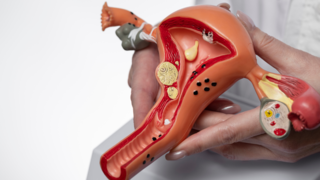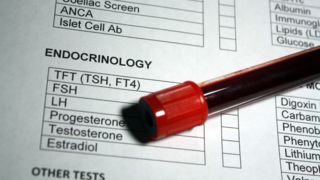This can result in two types of thrombosis:
- Arterial thrombosis, such as heart attacks or strokes.
- Venous thrombosis, such as deep vein thrombosis (DVT) or pulmonary embolism (PE).
These two types differ in how they form and are treated, though they share some risk factors. Understanding thrombophilia is important as it can lead to thromboembolism, where a blood clot travels through your body and blocks a blood vessel.
Types of Thrombophilia
Thrombophilia can be classified into inherited and acquired types. In many cases, both genetic traits and environmental conditions play a role. The main types include:Inherited Types
- Factor V Leiden mutation: The most common genetic risk factor, increasing thrombin production and clot risk.
- Prothrombin G20210A mutation: Leads to higher prothrombin levels, increasing the risk of arterial and venous clots.
- Antithrombin III deficiency: A rare but high-risk condition that reduces the body’s ability to regulate blood clotting effectively. Over 80 per cent of individuals with this form of thrombophilia experience at least one blood clot by the age of 50.
- Protein C deficiency: Can cause thrombosis, particularly in younger individuals, due to reduced anticoagulant activity.
- Protein S deficiency: It increases clotting by reducing the effect of activated protein C.
- Hyperhomocysteinemia: Caused by defects in methionine metabolism, linked to premature atherosclerosis and thrombosis.
- Sticky platelet syndrome: An inherited condition where platelets become overly reactive, promoting clot formation.
- Elevated factor VIII: Increases clotting risk. It is associated with inflammation or pregnancy.
- Dysfibrinolysis: Includes conditions such as plasminogen deficiency or elevated plasminogen activator inhibitor, which impair the breakdown of clots.
Acquired Types
- Antiphospholipid syndrome: The most common acquired thrombophilia, where antibodies attack phospholipids, causing clots or pregnancy loss.
- Malignancy: Cancer increases the risk of clots by releasing substances that promote clotting and affect blood vessels.
- Hormonal therapies: Oral contraceptives and hormone therapy elevate clotting risk.
- Heparin-induced thrombocytopaenia (HIT): A paradoxical clotting condition triggered by prolonged heparin use.
- Inflammation and infection: Trigger clotting in the body, increasing the risk of blood clots.
- Trauma: Causes a procoagulant imbalance, especially within the first 24 hours after injury.
- Smoking: Damages endothelial cells and reduces anticoagulant factors.
- Surgery: Triggers clotting due to tissue trauma and immobility.
Causes of Thrombophilia
Some of the medical conditions that can cause thrombophilia include:- Antiphospholipid syndrome
- Disseminated intravascular coagulation (DIC) is a rare disorder that causes widespread blood clotting throughout the body.
- Hepatitis
- HIV
- Liver disease
Symptoms of Thrombophilia
Thrombophilia itself doesn’t cause symptoms until a clot forms, which leads to thrombosis. Symptoms depend on where the clot occurs:Brain
- Seizures
- Headaches
- Difficulty speaking or vision changes
- Sudden weakness on one side of your body
Heart
- Shortness of breath
- Chest pain
- Tenderness and pain in the left arm
- Sweating
- Lightheadedness
- Nausea
Lungs
- Shortness of breath
- Fast breathing.
- Rapid heart rate
- Sharp pain when taking a deep breath
- Chest pain
Belly
- Nausea
- Vomiting
- Abdominal pain
- Swelling
Leg or arm
- Swelling
- Pain
- Redness or warmth over the clot site
Complications of Thrombophilia
Blood clots can travel through the body and restrict or block blood flow to important organs. Due to this, serious complications can occur, including:- Deep vein thrombosis (DVT)
- Pulmonary embolism (PE)
- Stroke
- Heart attack
- Pregnancy loss
- Preeclampsia
- Placental abruption
Evaluation of Thrombophilia
Screening is recommended if you have:- Thrombotic events before age 40: Early-onset thrombosis suggests a possible underlying thrombophilia.
- Recurrent thrombosis: Multiple unexplained blood clots should be thoroughly investigated. Clots that occur without obvious causes may suggest an underlying genetic or acquired thrombophilia.
- Family history of thrombosis: A family history increases the chances of inherited thrombophilias.
- Pregnancy complications: Screening is advised for unexplained pregnancy loss at or after 10 weeks, severe preeclampsia, severe intrauterine growth restriction, or placental abruption.
- Autoimmune disease: Conditions like lupus may be associated with antiphospholipid syndrome.
- Unexplained subfertility or repeated implantation failure: Thrombophilia may contribute to these reproductive challenges.
Tests
- Thrombophilia screen checks for antithrombin III, protein C and S deficiencies, factor V Leiden, prothrombin G20210A mutation, antiphospholipid antibodies, and homocysteine levels.
- Additional tests like a coagulation panel, D-dimer, and complete blood count may be required.
- For suspected antiphospholipid syndrome, specific tests like ELISA or the Russell viper venom test are used.
If you're older and have unexplained venous thromboembolism (VTE), your doctor may check for cancer. Up to 20 per cent of these cases are linked to undiagnosed malignancies.
Treatment of Thrombophilia
Treating thrombophilia focuses on preventing and managing clots. Treatment may involve:- Use of anticoagulants prevents new clots.
- Antiplatelets like aspirin may be used in some cases to reduce clot risk.
- In rare cases, coagulation factor substitution may involve giving antithrombin III or fresh frozen plasma to address specific deficiencies.
- Compression stockings and staying active can reduce clot risk.
When to Seek Medical Help
If you experience any of the following symptoms, it's important to visit a doctor immediately:- If you notice sudden or persistent swelling in one leg or arm.
- You may feel a cramping or aching pain in the affected area, such as your calf or thigh. The pain might worsen with movement or touch.
- The skin over the clot may become red, warm to the touch, or discoloured.
- If a clot travels to your lungs, you might experience sudden difficulty breathing or rapid breathing. This is an emergency and requires immediate care.
- Sharp or stabbing chest pain, especially if it worsens with deep breaths, coughing, or movement.
- A sudden cough, particularly if accompanied by blood, requires immediate attention.
- Feeling lightheaded or dizzy could mean a clot is affecting blood flow to your lungs or brain.
Thrombophilia is a serious condition that increases the chances of blood clotting, which can lead to severe health problems if left untreated. Understanding its causes, types, and symptoms is key to managing and preventing complications. If you have risk factors or a family history of thrombosis, early screening and treatment can make a significant difference. Consult your doctor if you have symptoms such as chest pain, swelling in your leg, or shortness of breath.
FAQs on What is Thrombophilia? Types, Causes, and Symptoms
- What are the symptoms of thrombophilia?
Symptoms typically arise when a clot forms, leading to swelling, pain, redness, or warmth in the affected area. Severe cases can cause chest pain, shortness of breath, or difficulty breathing. - What causes thrombophilia?
Thrombophilia can be inherited due to genetic mutations like Factor V Leiden or Prothrombin G20210A, or acquired through conditions like antiphospholipid syndrome.









